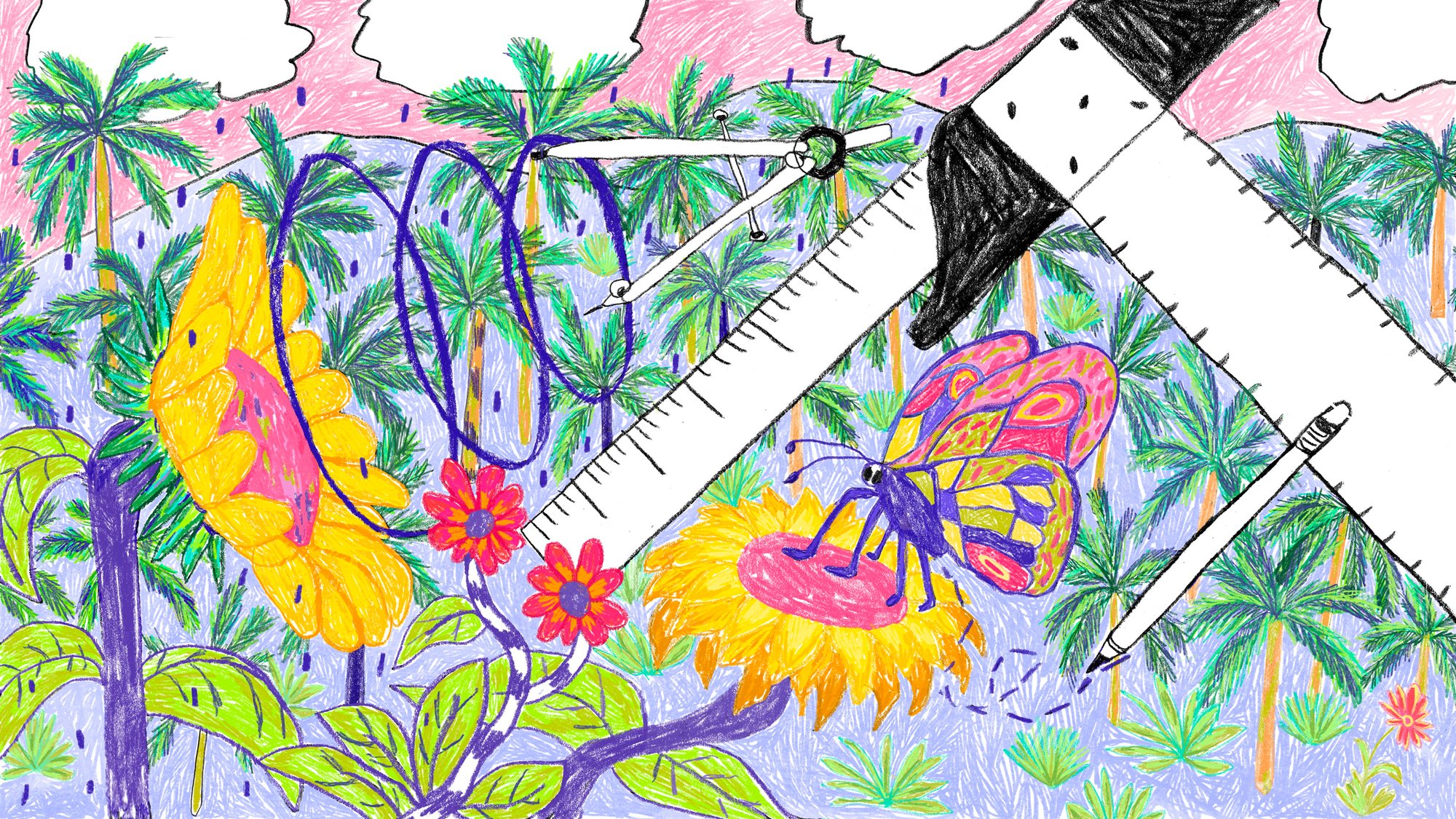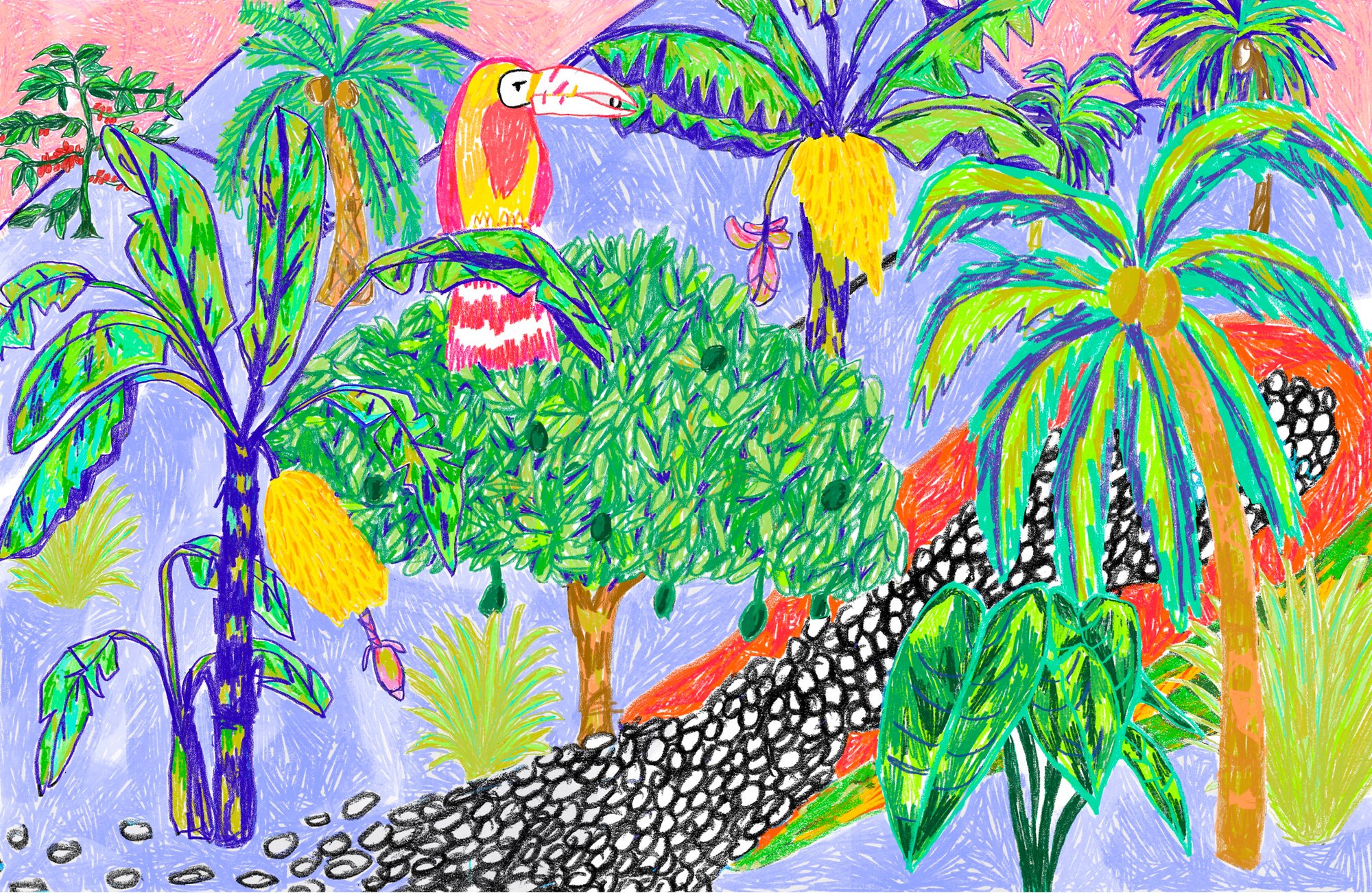Everyday Evolution
To stop the human and ecological destruction caused by linear design, environmental educator and activist Sage Lenier advocates for more intersectionality, circularity, and learning new skills.

Nearly every single thing in the room you’re in now, from the chair you’re sitting on to the shirt you’re wearing, will one day be trash—because we do not currently design with the planet in mind.
Humans, for all of our brief time here on Earth, have always been designers. We have fashioned clothes, built shelters, created agricultural systems, and decorated our belongings and spaces with personal touches. In earlier eras of human society, the materials available to us were largely defined by our natural environment, and when we discarded our creations, they returned to it. We worked with clay, bone, rock, wood, fabric. If you lost a woven basket or a leather shoe, it could simply decompose and once again become part of the earth. Indigenous communities solved problems primarily by working with their natural surroundings. Long before we had air conditioning, the Zuni and Hopi peoples built pueblo homes out of adobe because of the distinct advantages of the material—including its temperature regulation properties—in the scorching desert of Native America’s southwest. Islamic architects invented jaali—perforated walls of stone—that can lower indoor temperatures significantly, in addition to being beautifully intricate works of art.
Many modern environmental issues like pollution and wasted resources are largely ones of design—now we instead use petroleum-based substances like plastic, asphalt, and polyester. The widespread use of these materials, championed by the European and American colonial empires, developed in parallel with the Western idea of the earth as something meant to be conquered and subdued by humans.
Today, design reinforces colonialism more often than not. Colonial forces will move into brown people’s countries and make quick work of stripping the region’s natural resources (oil, timber, lithium, etc.) for their own consumer economies of fast fashion, cheap furniture, plentiful electronics, and more. The destruction of the local ecosystem also strips the local people of their ability to provide for themselves. Western consumerism survives on, and actually requires, a population of desperate people with no options other than to work in a factory, or a field, or a mine, for starving wages. If someone could support themselves from their own land, or pursue other means of income, they would never willingly accept a job in a sweatshop. So, it is manufactured desperation that provides the cheap labor that enables Western designers to keep cranking out a never-ending supply of hot trends, ecosystem pollution, and human suffering.

You don’t have to be a climate activist to be a driving force toward a sustainable and just future—we need millions of average, everyday people taking up new skills.
Sage Lenier
Educator and Activist
Breaking this cycle of embedded violence requires learning to design through an intersectional lens—one that requires makers to think through how factors of identity (gender, race, nationality, class, culture, etc.) interact with one another. Intersectional design requires not only consent but participation from the global majority. In that sense, intersectional design must be anti-colonial. My friend Isha Punja, on a trip to India, noticed how many craftspeople were having to leave their villages to work in factories in New Delhi and Mumbai because they could no longer afford to stay at home. She started buying up hand-woven and hand-printed textiles at a premium in an attempt to support their crafts, and created a fashion line of garments that are marketable in the West. She and her mom regularly visit these artisans, and she sends them photos of their fabrics modeled on world stages. Isha’s brand is a perfect example of indigenous-led design turning back the clock on a global erosion of diversity.
At present we have a linear economy: we extract resources, turn them into new products, and then trash them and start again, guaranteeing that the economy continually grows. The global economy is today more than six times the size that it was fifty years ago, but that has been accompanied by the degradation of 97 percent of the world’s ecosystems. Responsibly shrinking our economy without leaving the millions of people working in the global supply chain behind will require designing for circularity—learning to keep resources continually cycling by getting creative with what we have.
The key to circular design is using waste as a resource. Take the tech industry, for example: we throw away more than 40 billion pounds of e-waste each year. Using old electronics as a resource will require skilled computer whizzes to do repairs and ambitious creatives to reinvent old models for new technologies. And then we need to consider the intersectional dimensions of these shifts. If we increase metal recycling from e-waste, how do we make sure today’s miners are included in a just transition? In a regenerative economy, we’ll need seamstresses, urban gardeners, electronic repair experts, carpenters, mechanics. You don’t have to be a climate activist to be a driving force toward a sustainable and just future—we need millions of average, everyday people taking up new skills to get where we need to go.

Once we learn how to design at the apex of circularity and intersectionality, we can begin to design systems that actually benefit people and the planet. Scientific development has enabled us to understand the earth with a perspective unparalleled in human history. Rather than using that knowledge to harvest the earth’s resources more precisely, what if we used it to nourish community well-being as well as natural systems? In Hawai‘i, 90 percent of food consumed is imported. Generations of settler land theft has left Native Hawaiians economically impoverished on their own land, and 27 percent of them now report being food insecure.
Restoring Hawai‘i’s food sovereignty starts with Land Back movements and continues with indigenous-led design. On Maui, Kaipo Kekona and his wife, Rachel Lehualani Kapu, are playing their part in Hawai‘i’s land sovereignty movement by cultivating a dense edible forest. Such so-called food forests are a diverse planting of edible flora that attempts to mimic ecosystem patterns found in nature. Food forests do not have to be re-planted year after year, and once they’re established, they can grow many different crops simultaneously with very little human labor involved. In Kekona's forest, there are nine varieties of avocado and coconuts, three native bananas, six sweet potatoes and 27 types of kalo (taro), in addition to passionfruit, lemongrass, papaya, peanuts, and coffee. This farming technique, now called Polynesian agroforestry, is an ancient practice for Hawai‘i, and reviving it is a critical path forward for the lāhui (race), and for the ‘āina (land).
All over the world, our ancestors were attuned to natural systems out of necessity, yet we’ve become detached from them. As we look around and find ourselves hurtling toward ecological collapse, we must embrace the moral responsibility to dig in, with our hands, and rehabilitate the earth’s ecosystems. There is no possibility for a sustainable and just future without a mass mobilization of people working to replant and restore what we have degraded. Our imperative now is to learn to design in ways that work with nature, rather than against it. ❤
At Kazam! Magazine we believe design has the power to change the world. Our stories feature people, projects, and ideas that are shaping a better tomorrow.